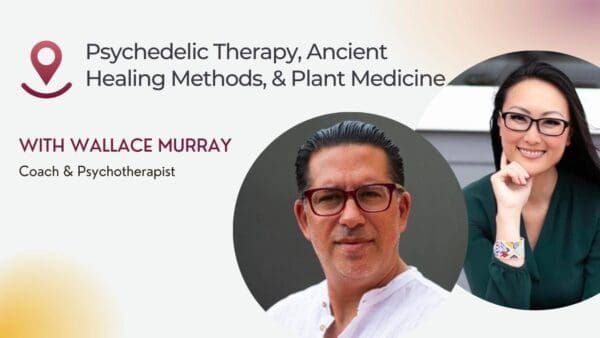Carl Jung is the founding figure in analytical psychology emerging during the 20th century. Both Jung, and Sigmund Freud, Jung’s one-time mentor, informed much of our language and ideas surrounding the human psyche, modern psychoanalysis, our human condition, and culture.
One of Carl Jung’s most interesting hypotheses is that the human psyche—or the collective human consciousness evolved over time—and will continue to evolve. Jung believed that we, as humans, inherit the “lower” or “less evolved” psychological frameworks of our ancestors. He believed that our unconscious minds contained within them the archetypes, stories, and common images of our ancestors.
Both Jung and Freud hypothesized that the “primitive” unconscious mind of our ancestors was more emotional, more anxious about the external world, and more prone to primeval fantasies.
Carl Jung’s The Red Book: Liber Novus, published after his death, contains seemingly incoherent written content and potent images suggesting to some that Jung must have used psychedelics to understand and connect with his own unconscious mind. Did Jung in fact understand something about psychedelics that would help him connect to this more “primitive, imaginative” psyche?
Do psychedelics unlock some primitive, subconscious part of our minds that help us better understand our inner psychic world and our collective human condition? And were Jung’s The Red Book ramblings evidence he was trying to connect to this in a deep way, using psychedelics to do so?
Evidence Jung’s The Red Book was created under the influence of psychedelics
Some of Jung’s acolytes presume he was under the influence of psychedelics when creating The Red Book: Liber Novus, which took sixteen years to complete. Some of the psychedelic type imagery illustrated in its pages might suggest why. But Carl Jung himself said as a younger man he was often at “variant with the reality of things,” and as such, often enjoyed a very imaginative inner world.
As an older man, Jung describes in his last book, Memories, Dreams, and Reflections, being very connected to nature as a young boy. He sympathized with his mother who often talked to the flowers and animals in a way Jung described as “pagan,” even though by tradition, his mother was Christian.
Carl Jung was also renowned for his work in analyzing the dreams of his friends, colleagues, and patients. He found patterns and archetypes, images, and narratives that seemed to have deep meaning and could offer insights into the unconscious mind of the dreamer.
Was Carl Jung then, a dreamer, a visionary, an artist capable of conceptualizing and generating the psychedelic images and ramblings found in The Red Book without the use of psychedelics? Probably. Might he have used psychedelics to catalyze some of these ideas? Possibly. But not likely. There is even evidence that Jung was vehemently opposed to the use of LSD, mescaline, and other psychotropic substances.
Carl Jung stressed the importance of integrating the unconscious and conscious mind. But do psychedelics play a role in that process?
Jung had strong opinions about how to integrate the unconscious and conscious contents of the mind. In his writings, especially in Letters of C.G. Jung, Vol 2, in correspodence to friend and priest, Victor White, it does not seem that Jung was a proponent of psychedelic use, especially without integrating the psychedelic experience.
Jung stressed that many users of mescaline and LSD, for example, were not yet equipped with the tools necessary to face the contents of the unconscious. And that by meeting the unconscious prematurely, the “ghosts” of the unconscious mind could continue to haunt those who delved into its contents without preparation.
Jung wrote this letter to White regarding writer and philosopher Aldous Huxley, author of the psychedelic classic The Doors To Perception. Huxley wrote his famed memoir detailing his journeys with mescaline and the insights he gained within the psychedelic state. In his letters to White, Jung did not seem to be impressed with Huxley in this regard. He was worried that without the Sorcerer to guide him, so to speak, the Apprentice would be vulnerable, left alone to struggle with machinations of the darker aspects of his psyche.
Jung also taught that both the unconscious and conscious minds must be integrated in healthy ways in order for a person to truly understand the Self. In the process of understanding the Self, the integrated unconscious and conscious parts of the psyche would become individuated—the pinnacle of human self-development. Individuation is the complete integration of the Self, as Jung described it.
The separate and distinct physiological self and the psychological self become one whole in the integrated, individuated self. In this sense, Jung likened the process of human individuation to the imagery of the mandala, a common motif seen in those under the influence of psychedelics. In the process of individuation, the integrated Self is the product of properly aligning the unconscious, physiological self and primitive brain with the psychological self, or the modern, evolved brain.
Some of this emerging research about psychedelics and their effects on human consciousness implies Jung may have been accurate in his descriptions of where more primitive and evolved states of consciousness originate in the brain.
If Carl Jung were still alive, would he be a proponent of modern psychedelic-assisted therapy?
Psychedelic-assisted therapy may serve as a tool to integrate these unconscious and conscious parts of the psyche. Jung studied the unconscious for the last forty to fifty years of his life—which ended all too soon, in 1964. He was a brilliant mind who proposed paradigm-shifting ideas about how the primeval and modern aspects of human consciousness interact and that modern neuroscience, at least in part, are now coming to some consensus on.
New research shows mounting evidence that psychedelics are in fact therapeutic for an array of ailments from treatment-resistant depression to OCD, PTSD, and even suicidality especially when clients are assisted in a controlled setting. Modern fMRI imaging tools allow researchers to study what is happening to the brain while undergoing psychedelic treatment, which offers insights as to why they are therapeutic.
While Carl Jung left this plane of existence, his writings remain—as does his impact on our collective consciousness. The Red Book’s prose and imagery also remain with us. And are a reminder that the contents of the human imagination and our dream states do resemble the motifs and archetypes often seen by those under the influence of psychedelics.
Despite what Jung might think of psychedelic-assisted therapy today, as a sort of puritan who prized the difficult “ego work” necessary to make the unconscious conscious, psychedelic-assisted therapy has proven effective in many therapeutic contexts (and can even be coupled with Jungian psychotherapy).
It is hard to know if Carl Jung would still be reticent about humans delving into the unconscious mind with such powerful psychedelics as mescaline, ayahuasca, LSD, and psilocybin. However, it is clear that the integration of the unconscious and conscious mind remains an important facet of psychedelic-assisted therapy—and is key to its actually being therapeutic.







